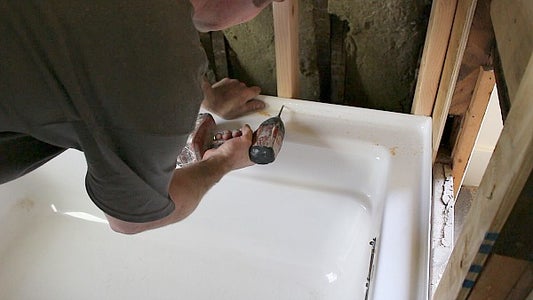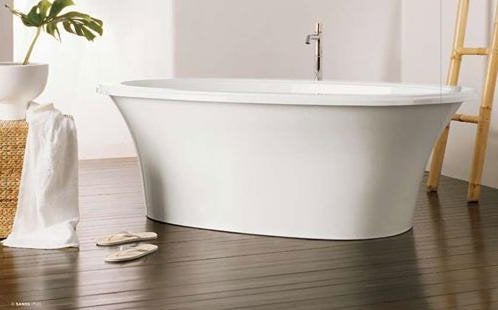Can I Set Up A Tub Myself?
Can I Set Up A Tub Myself?
Blog Article
Are you currently hunting for critical info about How to Install a Bathtub: Install an Acrylic Tub and Tub Surround?

Setting up a bathtub isn't exactly brain surgery, but it does call for strong plumbing, carpentry, and also often, tiling skills. Replacing an old bath tub with a new one is also a reasonably difficult task. If the old tub is easily available, the task can move speedily; if you need to open up a wall surface to get rid of the old bathtub and position the brand-new bathtub, the job is much harder. In either instance, the job is within a residence handyman's skills, although you will certainly need an assistant to leave the old tub as well as set in the new one. Make sure you have certified on your own for the job as well as are comfortable trying it. Rather than employing a professional to take control of a halfway-completed project, it is much better to take into consideration employing one prior to you begin. Possibilities are you might need an expert plumber to make tube connections.
This post will assist you mount a new bath tub in your bathroom if you have currently gotten a new tub and also don't require to transform the arrangement of your previous water system pipelines.
Your tools as well as material list should make up the following:
Removing Old Taps
If you require to change old faucets with new ones as a part of your setup, then the first thing you should do is detach the water system. After doing so, turn on the taps to drain any type of water remaining in the system. The procedure of getting rid of the existing taps can be rather bothersome due to the restricted gain access to that is commonly the instance.
Use a basin wrench (crowsfoot spanner) or a tap device to reverse the nut that attaches the supply pipes to the taps. Have a fabric prepared for the continuing to be water that will certainly originate from the pipelines. Once the supply pipes have actually been removed, use the same tool to loosen the nut that holds the faucets onto the bath/basin. You will certainly require to quit the solitary faucets from transforming throughout this procedure. As soon as the faucets have actually been gotten rid of, the holes in the bath/basin will certainly need to be cleansed of any old securing substance.
Before moving on to fit the brand-new taps, compare the pipe links on the old faucets to the brand-new faucets. If the old faucets are longer than the brand-new faucets, after that a shank adapter is required for the new taps to fit.
Suitable New Touches
If the tails of the brand-new faucets are plastic, after that you will certainly require a plastic adapter to stop damages to the string. One end of the adapter fits on the plastic tail of the faucet and also the various other end offers a link to the existing supply pipes.
If you need to fit a monobloc, after that you will certainly call for lowering couplers, which attaches the 10mm pipeline of the monobloc to the typical 15mm supply pipeline.
Next off, place the tap in the installing hole in the bath/basin guaranteeing that the washers are in area in between the tap as well as the sink. Protect the tap in place with the manufacturer provided backnut. Once the faucet is safely in position, the supply pipelines can be linked to the tails of the taps. The faucets can either be linked by using corrugated copper piping or with normal faucet adapters. The former type needs to be attached to the faucet ends first, tightening just by hand. The supply pipes can later be connected to the various other end. Tighten both ends with a spanner after both ends have been attached.
Mounting the Tub
Using the two wood boards under its feet, position the tub in the required placement. The wood boards are useful in equally spreading out the weight of the bathtub over the area of the boards as opposed to focusing all the weight onto four tiny factors.
The next goal is to make certain that the tub is leveled all round. This can be achieved by examining the level and adjusting the feet on the tub until the level checks out level.
To mount taps, fit the bottom of the outermost versatile tap adapter to the proper supply pipe by making a compression sign up with; then do the very same for the other faucet.
Turn on the water supply and also check all joints and also new pipework for leaks as well as tighten them if necessary. Fill up the bathtub and also inspect the overflow outlet as well as the typical electrical outlet for leaks.
Ultimately, repair the bathroom paneling as explained in the supplier's instruction manual. Tiling and also sealing around the tub should wait up until the bathtub has been made use of at least when as this will settle it right into its last position.
Planning for the Installation
First of all, the supporting framework provided with the bath needs to be fitted (if required) according to the maker's instructions. Next, fit the faucets or mixer to the bathtub. When fitting the faucet block, it is essential to make certain that if the tap includes a plastic washing machine, it is fitted in between the bath as well as the faucets. On a plastic bath, it is likewise reasonable to fit a supporting plate under the faucets system to stop strain on the tub.
Fit the adaptable faucet connectors to the bottom of both taps utilizing 2 nuts and also olives (often provided with the tub). Fit the plug-hole outlet by smearing mastic filler round the sink electrical outlet opening, and then pass the outlet with the hole in the bathroom. Make use of the nut provided by the manufacturer to fit the plug-hole. Analyze the plug-hole electrical outlet for an inlet on the side for the overflow pipeline.
Next off, fit completion of the flexible overflow pipe to the overflow outlet. Afterwards, screw the pipe to the overflow face which ought to be fitted inside the bathroom. Make certain you make use of all of the supplied washing machines.
Connect the trap to the bottom of the waste outlet on the bathtub by winding the thread of the waste outlet with silicone mastic or PTFE tape, as well as screw on the catch to the electrical outlet. Attach all-time low of the overflow tube in a comparable manner.The bathroom should now be ready to be fitted in its final setting.
Tiling Around the Tub
In the area where the bath satisfies the ceramic tile, it is needed to secure the accompanies a silicone rubber caulking. This is important as the fitting can move enough to break a stiff seal, triggering the water to permeate the wall between the bath and the tiling, leading to problems with wetness and also feasible leakages to the ceiling listed below.
You can select from a range of coloured sealers to assimilate your fixtures and fittings. They are sold in tubes and also cartridges, and also can securing spaces as much as a size of 3mm (1/8 inch). If you have a bigger gap to fill, you can fill it with twists of soaked paper or soft rope. Remember to constantly load the bath tub with water prior to securing, to enable the activity experienced when the bathtub is in usage. The sealer can fracture rather very early if you do not take into account this activity prior to securing.
Additionally, ceramic coving or quadrant tiles can be used to border the bathroom or shower tray. Plastic strips of coving, which are easy to use as well as cut to size, are also conveniently readily available on the marketplace. It is recommended to fit the tiles using waterproof or water resistant adhesive and also cement.
Bathtub Installation
How Important Is A Bathtub To Your Home?
High-quality baths, showers, and other bathroom updates are necessary when considering a smart investment in your home. It’s a room that you go to every day and one that is constantly being used by guests.The bathroom is one of the top trafficked rooms in a home and also one of the most valuable in terms of home resale.
Install Piping Before Tub
You will be using your existing drain and waste vent system, but pipes required include the hot and cold water supply lines and a pipe leading to a shower head. A mixing valve and shower head are also needed. Air chambers may be required.
Position the Tub
Lower the tub into place so that the continuous flange fits against the wall studs and rests on 1’x4' or 2’x4' supports. Anchor the tub to the enclosure with nails or screws inserted through the flanges into the studs.
NOTE: Remember, bathtubs and shower stalls may require support framing. A bathtub filled with water is extremely heavy, so check building codes and framing support before installing the tub.
Assemble Drain Connections
Assemble the bathtub drain connections by connecting the tub overflow with the tub drain above the trap, not beyond it. The trap will have a compression fitting that screws over the arm of the overflow assembly.
Place a Pipe For the Shower Head
First, locate a brass female threaded winged fitting and attach it to a framing support via a screw or a nail. Then run a pipe up the wall for the shower head. Sweat or solder the other side of the brass fitting to the top of the pipe.
Attaching Hot and Cold Water Lines
Attach your water lines for both hot and cold by sweating these directly into the hot and cold ports of the mixing valve. The mixing valve will be how water enters the tub’s system, not by the pipes themselves.
Install the Spout
Extend a piece of 1/2 inch pipe, or whichever length is specified in the manufacturer’s instructions, for the tub spout. Sweat on a male threaded fitting at the end of the pipe or use a brass nipple of the proper length and a 1/2 inch cap.
NOTE: At this point you should have your rough-in plumbing work inspected before proceeding further.
Check For Leaks
Restore the water pressure and check the drain connection and the supply pipes for any sign of leaking.
estore the Bathroom Wall
Replace the wall with moisture-resistant drywall as a base for your wall covering. Seal the joints between the wall and your new tub with silicone caulk as protection against water seepage.
https://www.berkeys.com/2016/12/02/bathtub-installation-dallas/

I ran across that write up about A Step-by-Step Guide to Installing a Bathtub while exploring the search engines. Do you know somebody else who is intrigued by the subject? Please feel free to share it. We truly appreciate reading our article about A Step-by-Step Guide to Installing a Bathtub.
Suggested Site
Report this page